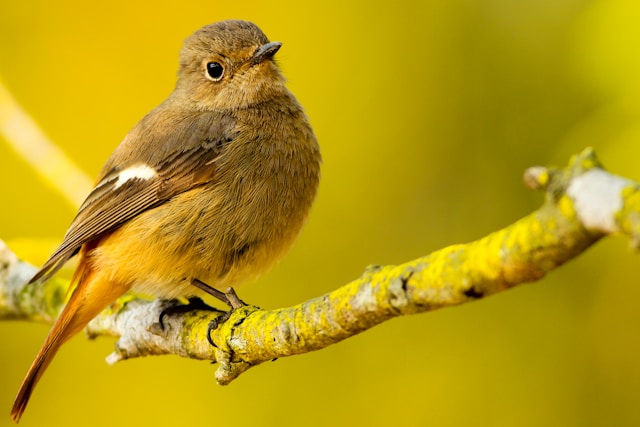New Zealand, a land of stunning landscapes and unique wildlife, is a paradise for bird photographers. The country’s diverse ecosystems are home to an array of bird species found nowhere else on Earth, making it an ideal destination for capturing breathtaking avian images. Whether you’re an amateur photographer or a seasoned pro, photographing New Zealand’s birds requires a blend of patience, technique, and understanding of the natural environment. This article offers professional tips and insights to help you capture the beauty of New Zealand’s birdlife.
Essential Equipment for Bird Photography
- Camera:
- A DSLR or mirrorless camera with a fast autofocus system and high burst rate is ideal for bird photography. Models with good low-light performance are also beneficial for early morning or late afternoon shoots.
- Lenses:
- A telephoto lens (300mm or longer) is essential for capturing detailed shots of birds from a distance without disturbing them. Zoom lenses (such as 100-400mm) offer versatility, allowing you to quickly adjust to different focal lengths.
- Tripod/Monopod:
- A sturdy tripod or monopod can help stabilize your camera, especially when using heavy telephoto lenses. A gimbal head on your tripod can provide smooth panning for tracking moving birds.
- Accessories:
- Extra batteries and memory cards are a must, as bird photography sessions can be long and demanding. Lens cleaning kits are also important to keep your equipment in top condition.
- Clothing:
- Wear neutral-colored, weather-appropriate clothing to blend into the environment and avoid startling birds. Comfortable, waterproof footwear is essential for navigating various terrains.
Techniques for Capturing Stunning Bird Photos
- Understanding Bird Behavior:
- Spend time observing the birds you want to photograph. Understanding their behavior, feeding patterns, and flight paths can help you anticipate movements and capture decisive moments.
- Shooting in Natural Light:
- Early morning and late afternoon offer the best lighting conditions for bird photography. The soft, warm light during these times enhances the colors and textures of the birds and their surroundings.
- Using the Right Settings:
- Set your camera to a fast shutter speed (1/1000s or higher) to freeze the action, especially for birds in flight. Use aperture priority mode (f/5.6 to f/8) to ensure a good depth of field while keeping the bird in focus. Adjust ISO settings to balance exposure without introducing too much noise.
- Focus and Composition:
- Use continuous autofocus (AI Servo/AF-C) to track moving birds. Compose your shots with the bird’s eyes in sharp focus, and try to include elements of the bird’s natural habitat to add context and interest to your photos.
- Patience and Stealth:
- Patience is key in bird photography. Move slowly and quietly to avoid startling the birds. Use natural cover or camouflage to get closer without being noticed.
Best Locations for Bird Photography in New Zealand
- Tiritiri Matangi Island:
- This open sanctuary near Auckland is home to a variety of rare and endangered birds. The island’s well-maintained walking tracks offer excellent opportunities to photograph species like the saddleback, North Island robin, and little spotted kiwi.
- Kapiti Island:
- Off the coast of Wellington, Kapiti Island is a predator-free haven for birds such as the stitchbird, kokako, and takahe. Guided tours and overnight stays provide ample time to capture stunning images.
- Okarito Lagoon:
- The West Coast’s largest unmodified wetland is famous for the rare white heron (kotuku). Kayaking tours offer a unique perspective to photograph herons, royal spoonbills, and other waterbirds.
- Stewart Island:
- Known for its diverse birdlife, Stewart Island is one of the best places to photograph the elusive kiwi in the wild. Ulva Island, a nearby predator-free sanctuary, is also a prime location for bird photography.
- Miranda Shorebird Centre:
- Located on the Firth of Thames, this center is a vital stopover for migratory shorebirds. Capture flocks of godwits, wrybills, and red knots from well-positioned hides.
- Fiordland National Park:
- With its dramatic landscapes, Fiordland is a haven for birdlife. Boat tours on Milford and Doubtful Sounds offer opportunities to photograph seabirds, including the Fiordland crested penguin.
- Arthur’s Pass National Park:
- The Southern Alps’ alpine environment is perfect for capturing the intelligent kea, New Zealand’s alpine parrot, and other high-altitude species like the rock wren.
- Cape Kidnappers:
- Home to the world’s largest mainland gannet colony, Cape Kidnappers offers spectacular views and close-up shots of gannets during their breeding season.
- Rotorua’s Sulphur Bay:
- This geothermal area attracts various bird species, providing unique photo opportunities against a backdrop of steaming vents and colorful waters.
- The Catlins:
- A rugged coastal region with diverse habitats, The Catlins is ideal for photographing the rare yellow-eyed penguin, Hector’s dolphin, and royal spoonbill.
Post-Processing Tips
- Editing Software:
- Use editing software like Adobe Lightroom or Photoshop to enhance your photos. Adjust exposure, contrast, and color balance to bring out the best in your images.
- Crop and Composition:
- Cropping can improve composition and focus attention on the bird. However, avoid excessive cropping to maintain image quality.
- Noise Reduction:
- High ISO settings can introduce noise. Use noise reduction tools to clean up your images without losing detail.
- Sharpening:
- Apply sharpening selectively to enhance the details of the bird’s plumage and eyes, but be careful not to over-sharpen, which can make the image look unnatural.
Conclusion
Photographing New Zealand’s birds is a rewarding experience that combines technical skill with an appreciation for nature. By understanding bird behavior, using the right equipment, and visiting the best locations, you can capture stunning images that showcase the beauty and diversity of New Zealand’s avian life. Whether you’re documenting rare species or simply enjoying the art of bird photography, these tips from a professional will help you make the most of your birdwatching adventures. Happy shooting!
